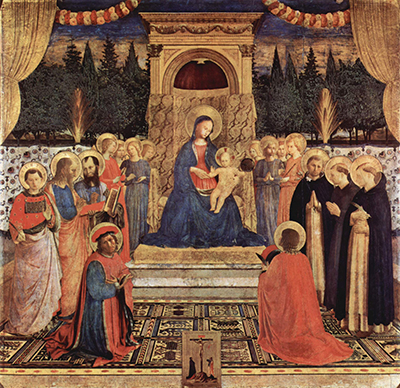Fra Angelico was born in the Republic of Florence around 1395 in a small town called Rupecanina in the region of Mugello
Florence was to become the capital of the Renaissance, supported by significant contributions in Venice, Rome and elsewhere across the Papal States. Artist Fra Angelico would play a key role in the transition from medieval and gothic art towards the new styles found in the various stages of the Renaissance.
His religious upbringing went hand-in-hand with his artistic development as he was to learn his trade working in various convents in which he was residing. Fra Angelico would become a Dominican friar by around 1420 and continue developing his artistic skills in the priory of San Domenico at Fiesole.
His nickname of Fra Angelico was given to him in order to differentiate the budding artist from other friars with a similar name. By now his ability was beginning to be noticed and his proximity to the city of Florence was always likely to provide the sort of connection needed to take his artistic career to the next level. He had been baptised as Guido di Pietro.
When St Antoninus Pierozzi, a close colleague and friend, became the archbishop of Florence it seemed inevitable now that the talented painter would raise the level of his commissions and start to build his reputation more widely. The details of his life in general have been hard to draw together, with so much time have passed by since the early 15th century. Most art historians believe he received training from Lorenzo Monaco who perhaps taught Fra of the method of adding exceptional detail to his scenes, see Madonna of the Star and The Annunciation as potential examples of this.
Fra Angelico was highly respected as an artist and also as a human being. He was a highly moral individual and would use his religious teachings to drive his art. In terms of behaviour and personality, comparisons can be drawn between Fra Angelico and Caravaggio, an artist who was banned from several states for repeatedly unruly, sometimes violent incidents. His respect for others and devotion to God helped to build a popular respect from others.




